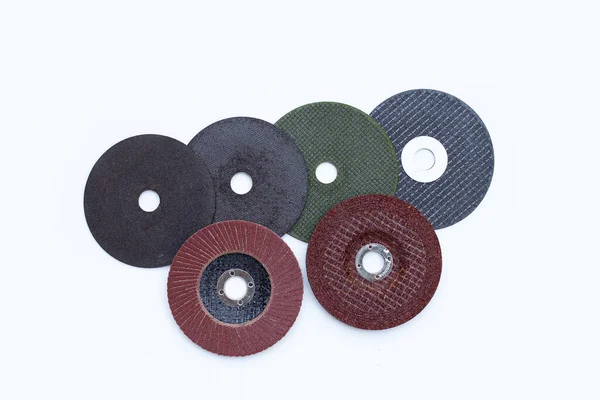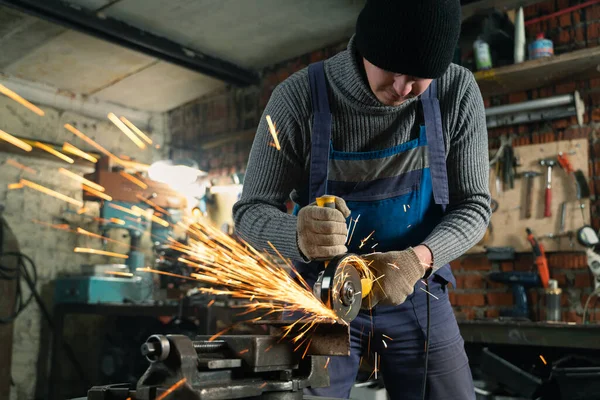Portable cutoff wheels are invaluable tools in various industries, providing a convenient and efficient way to cut through materials like metal, concrete, and masonry. However, their power and speed make them potentially dangerous if not used with caution. To ensure a safe working environment and prevent accidents, it’s crucial to adhere to proper safety guidelines. This article explores the do’s, don’ts, and safe practices when using portable cutoff wheels.
Understanding Portable Cutoff Wheels:
Before delving into safety measures, it’s essential to understand the components and functions of portable cutoff wheels. These wheels are commonly attached to handheld grinders or cutoff machines, featuring a rotating disc with abrasive edges that can cut through various materials. The power and speed of these tools make them efficient, but they also require careful handling to avoid accidents.
Do’s: Best Practices for Portable Cutoff Wheel Safety
- Read the Manufacturer’s Instructions:
Always start by thoroughly reading and understanding the manufacturer’s instructions and guidelines. Each portable cutoff wheel model may have specific safety recommendations and usage instructions. Ignoring these guidelines can lead to accidents or damage to the tool.
- Wear Personal Protective Equipment (PPE):
The importance of wearing proper personal protective equipment cannot be overstated. This includes safety glasses, hearing protection, gloves, and a dust mask or respirator if cutting materials generate airborne particles. PPE provides a crucial barrier between the operator and potential hazards.
- Inspect the Cutoff Wheel Before Use:
Regularly inspect the cutoff wheel for any signs of damage, wear, or distortion. Replace worn-out or damaged wheels immediately. Using a compromised wheel can result in breakage, leading to serious injuries.
- Secure the Workpiece:
Always ensure that the workpiece is securely clamped or held in place. A loose or unstable workpiece can cause the cutoff wheel to bind or kickback, increasing the risk of accidents. Additionally, a secure workpiece allows for more precise cutting.
- Choose the Right Wheel for the Material:
Different cutoff wheels are designed for specific materials. Ensure you use the appropriate wheel for the material you are cutting. Using the wrong wheel can result in reduced efficiency and compromised safety.
- Maintain a Stable and Comfortable Stance:
Stand in a stable and comfortable position while operating the cutoff wheel. Distribute your weight evenly and keep a firm grip on the tool. This stance provides better control and minimizes the risk of losing balance during operation.
- Follow a Gradual Approach:
When initiating a cut, start with a light pressure and gradually increase it as the wheel gains momentum. Avoid forcing the tool through the material, as this can lead to kickback or wheel breakage.
- Use a Proper Depth of Cut:
Adjust the depth of cut according to the material thickness. Cutting too deeply may overload the wheel and increase the risk of kickback, while shallow cuts can reduce the tool’s efficiency.
- Allow the Wheel to Reach Full Speed:
Before making a cut, ensure that the cutoff wheel has reached its full speed. Cutting with a wheel that hasn’t reached its optimum speed can lead to overheating and premature wear.
- Follow Proper Shut Down Procedures:
After completing a cut, allow the cutoff wheel to come to a complete stop before setting the tool down. This minimizes the risk of accidental contact with the rotating wheel.
Don’ts: Common Mistakes to Avoid
- Don’t Remove Safety Features:
Resist the temptation to remove or bypass safety features on the cutoff wheel or grinder. These features are designed to protect the operator and should remain intact for safe operation.
- Don’t Overreach:
Maintain a comfortable working distance from the cutoff wheel. Overreaching or stretching too far increases the likelihood of losing control and may result in accidents.
- Avoid Excessive Pressure:
Applying excessive pressure to the cutoff wheel is not only inefficient but also dangerous. Let the wheel do the work, and avoid forcing it through the material, as this can lead to overheating and premature wear.
- Don’t Use a Damaged Wheel:
Never use a damaged or worn-out cutoff wheel. Inspect the wheel before each use and replace it if there are any signs of wear, cracks, or other damage.
- Avoid Loose Clothing and Jewelry:
Loose clothing, jewelry, or other accessories can get caught in the rotating wheel, posing a serious hazard. Wear fitted clothing and remove any accessories before operating the cutoff wheel.
- Don’t Bypass Safety Guards:
Safety guards are designed to protect the operator from sparks and debris. Never operate a cutoff wheel with a missing or improperly installed safety guard.
- Avoid Operating Without Proper Training:
Operating a cutoff wheel without proper training and experience is a recipe for disaster. Ensure that operators are adequately trained on the correct usage and safety procedures.
- Don’t Operate in Hazardous Environments:
Avoid operating cutoff wheels in hazardous environments, such as areas with flammable materials or explosive atmospheres. Sparks generated during cutting can pose a significant fire risk.
Safe Practices for Specific Applications:
- Metal Cutting:
When cutting metal, use a metal cutoff wheel. Keep the wheel cool by applying a cutting fluid or coolant to prevent overheating and premature wear.
- Concrete and Masonry Cutting:
For concrete and masonry cutting, use a cutoff wheel with a diamond or abrasive material suitable for these applications. Ensure proper ventilation to minimize dust exposure, and use a dust extraction system when possible.
- Dry Cutting vs. Wet Cutting:
Know the requirements of the material you are cutting. Dry cutting is suitable for some materials, while wet cutting may be necessary for others. Wet cutting reduces heat and minimizes dust but requires appropriate equipment and precautions.
Conclusion:
Portable cutoff wheels are powerful tools that, when used with caution and adherence to safety guidelines, can significantly enhance efficiency in various industries. By following the do’s, avoiding the don’ts, and incorporating safe practices for specific applications, operators can minimize the risk of accidents and create a safer working environment. Regular maintenance, proper training, and a commitment to safety should be integral parts of every workplace that utilizes portable cutoff wheels.


